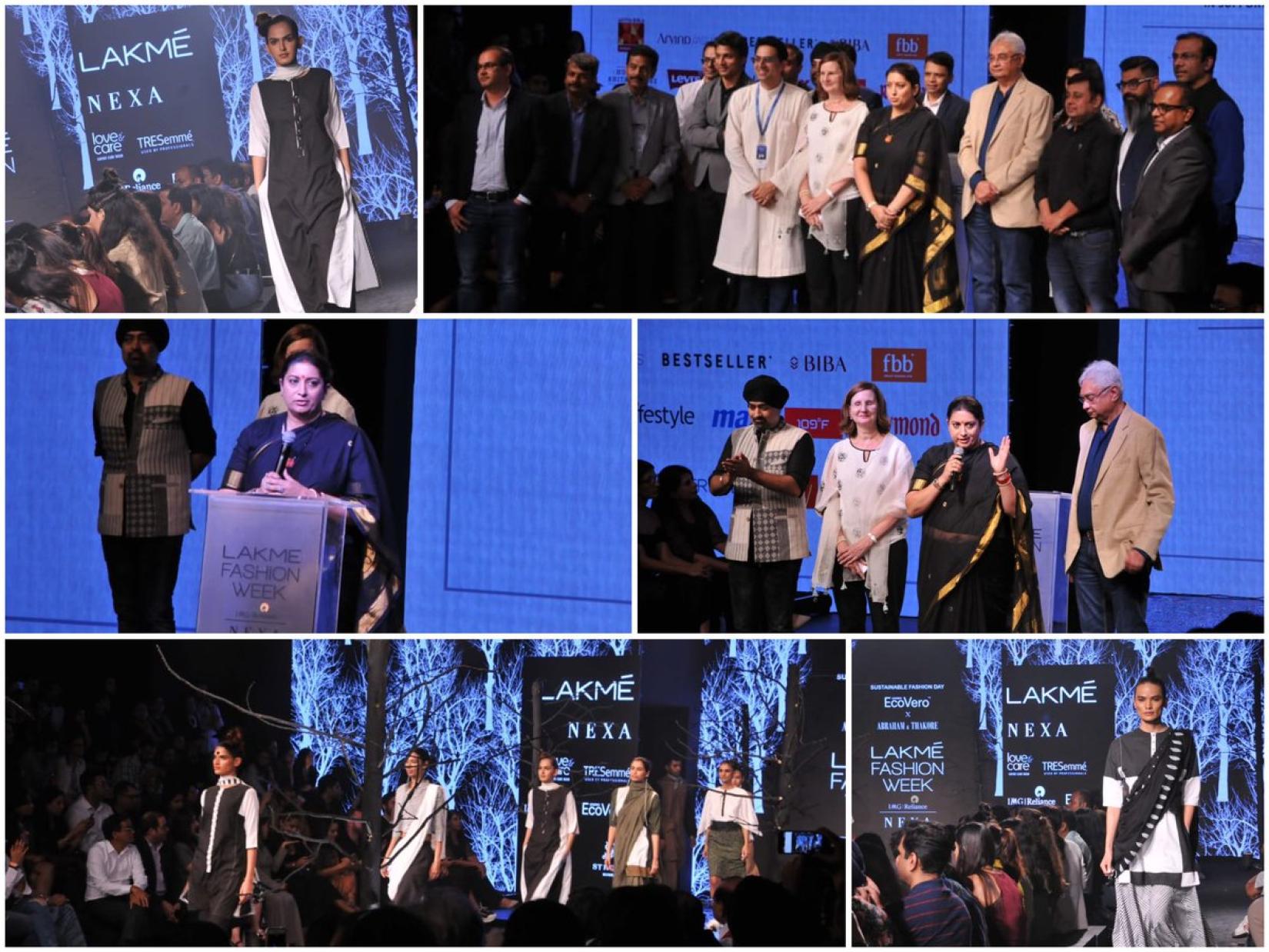Speech
Launch of Project Sustainable Resolution (SU.RE): Lakmé Fashion Week
22 August 2019
Renata Lok-Dessallien, United Nations Resident Coordinator in India
(Speech as prepared)
Honourable Minister of Textiles, Government of India
…

Renata Lok-Dessallien, United Nations Resident Coordinator in India
(Speech as prepared)
Honourable Minister of Textiles, Government of India
President, Clothing Manufacturers Association of India,
Distinguished guests, ladies and gentlemen,
Namaste,
- First, I would like to express my appreciation personally to Minister Ms. Smriti Irani, for her leadership of this incredible effort to make India’s textile sector a catalyst for national growth and job creation.
- The United Nations is a champion of India’s heritage and I want to thank you for giving us the opportunity to partner with you in showcasing how a proud national heritage can be the foundation for sustainable development.
- My heartiest congratulations also to CMAI and IMG Reliance for convening the strength of the fashion industry towards this Sustainable Resolution Project.
- When we talk about the fashion industry, we are not talking about a small sector on the peripheries of development.
- We are talking about a global business, worth US$ 2.4 trillion. We are talking about value chains, agriculture, markets, and livelihoods. We are talking about the empowerment of women, young people, farmers, small and medium enterprises, and artisans. We are talking about the living heritage of our world.
- Change in an industry of this scale – imagine the impact it can have on the lives of billions of people around the world. But it isn’t merely about numbers. The history of fashion is the story of exploration and progress.
- Above all, fashion is about defying business as usual – about disrupting the status quo. The Sustainable Development Goals seek to shift the way we think about production and consumption, our businesses and lifestyles. There is no industry better suited to shape those disruptions.
- The SDGs are also about looking beyond the “development” sector and its conventional bearings of ministries and governments and activists and UN agencies. The brass tacks, the work towards Agenda 2030 will not just happen there. It will happen in businesses and banks, laboratories and classrooms and factories – and it will happen here – on the runway.
- And there is no better wellspring for it than India.
- The Indian fashion industry has gone beyond the mandate of fashion. It is showcasing India’s tangible textiles and intangible skills, linking artisans to modern supply chains, bringing together centuries-old art and the technologies of 2019, experimenting with eco-friendly practices and circular design, and empowering women.
- Project SU.RE exemplifies this spirit.
- It inaugurates a new dialogue that can accelerate concrete actions for sustainability and climate action, and reduce environmental costs, through the entire value chain of clothes manufacturing through designers, the handloom industry, craftsmen, and the private and public sectors.
- And above all, it sets a concrete target, aligned to the UN Fashion Industry Charter for Climate Action: a commitment to sourcing/utilizing certified sustainable raw materials by 2025.
- I want to thank and congratulate the 30 brands and companies that have signed on to this commitment.
- The business case for sustainable fashion is clear: the future of design is foremost about design with a future. Without sustainable supply chains, the industry will become less and less viable as its carbon footprint grows.
- My message to the industry is this: your audience – the consumer – has set the SDGs, and they now want clothes that are authentic to their aspirations for a more sustainable future. It is no longer acceptable that our lifestyles should come from depletion of our environment. Humane conditions of work and climate friendly practices at every stage in the production of fashion is now a global and national imperative.
- Granted that “eco-friendly” and “ethical” were not the most glamorous labels for clothes a decade ago. But the involvement of high-end fashion is changing that. The United Nations Global Ethical Fashion Initiative now includes fashion lines by Vivienne Westwood and Stella McCartney.
- Innovating with natural, local, and recycled materials does open new opportunities – a new avant-garde – which is abundantly on display at the Lakmé Fashion Week, and especially today.
- The 17 SDGs are not just an international agreement or a list of development targets – they are a comprehensive plan of action. Not one of these targets can be achieved without the other. No one sector can achieve them. Nothing short of a full ecosystem approach will be enough. Just like fashion. Fashion is not just about the designer or the farmer of cotton – it is about the entire ecosystem – the entire supply chain.
- From cultivation to weaving to designing to transporting to reaching storefronts and runways and to you, fashion has already touched every part of the economy, and affected the lives of hundreds of people along the way.
- But precisely because this process is so long and complex, for buyers and designers it may not always be easy to identify where the gaps are, and what the impact is. This is why the SU.RE Project is so important.
- At the United Nations, we understand that the global achievement of the SDGs depends on the achievement of the SDGs in India. India is not only a big part of the agenda for its sheer scale, it is a strategic accelerator.
And the contributions of Project SU.RE, as well as our ongoing partnership with Lakmé Fashion Week, are in the vanguard of this effort.
UN entities involved in this initiative
UN
United Nations


















